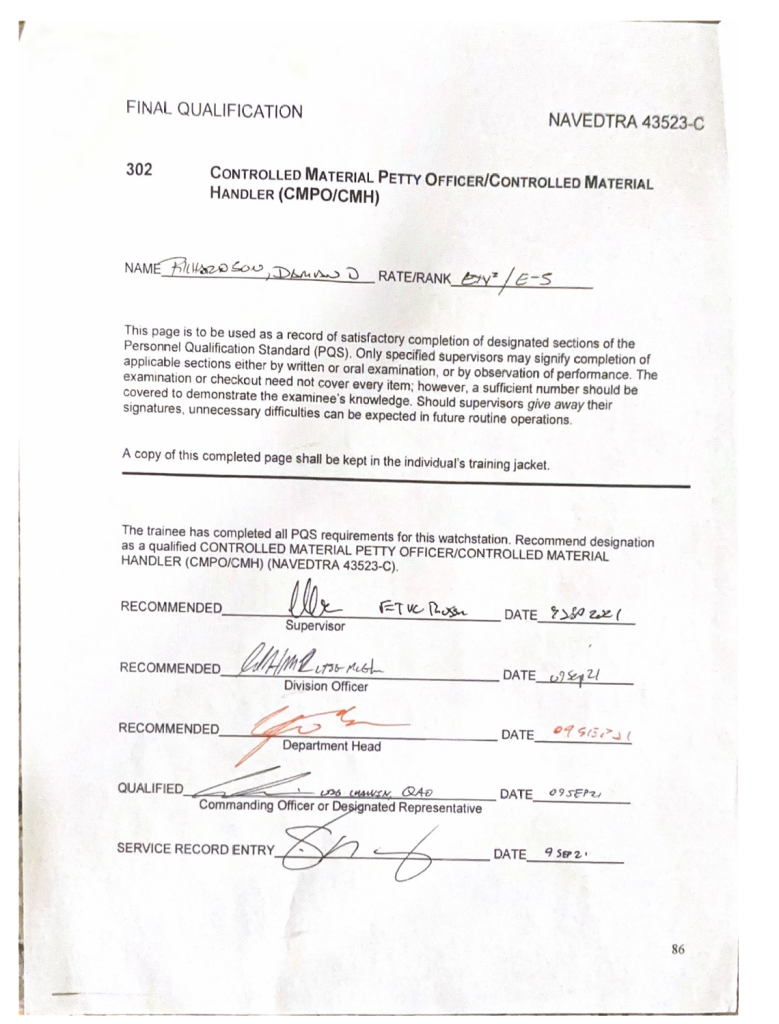Risk Assessment and Management – Skill #1
Risk assessment and management are skills I have actively developed through real-world experience. For example, while serving as a Lead Petty Officer in the Navy, I was responsible for conducting operational risk assessments before major maintenance tasks and deployments. I had to identify safety, technical, and procedural risks, evaluate the likelihood and potential consequences, and then recommend or enforce controls to reduce those risks — often under tight deadlines. One specific instance was during a major systems upgrade on a submarine, where I coordinated a team risk analysis to identify points of failure if we proceeded without additional testing. I led a cross-functional team meeting, created a risk matrix prioritizing our top concerns, and then worked with leadership to schedule additional validation tests. Because of that, we caught a system configuration error early, preventing a major operational delay and saving thousands of dollars in rework costs.
Here are a few awards that demonstrates risk assessment and management to be one of my hard skills.
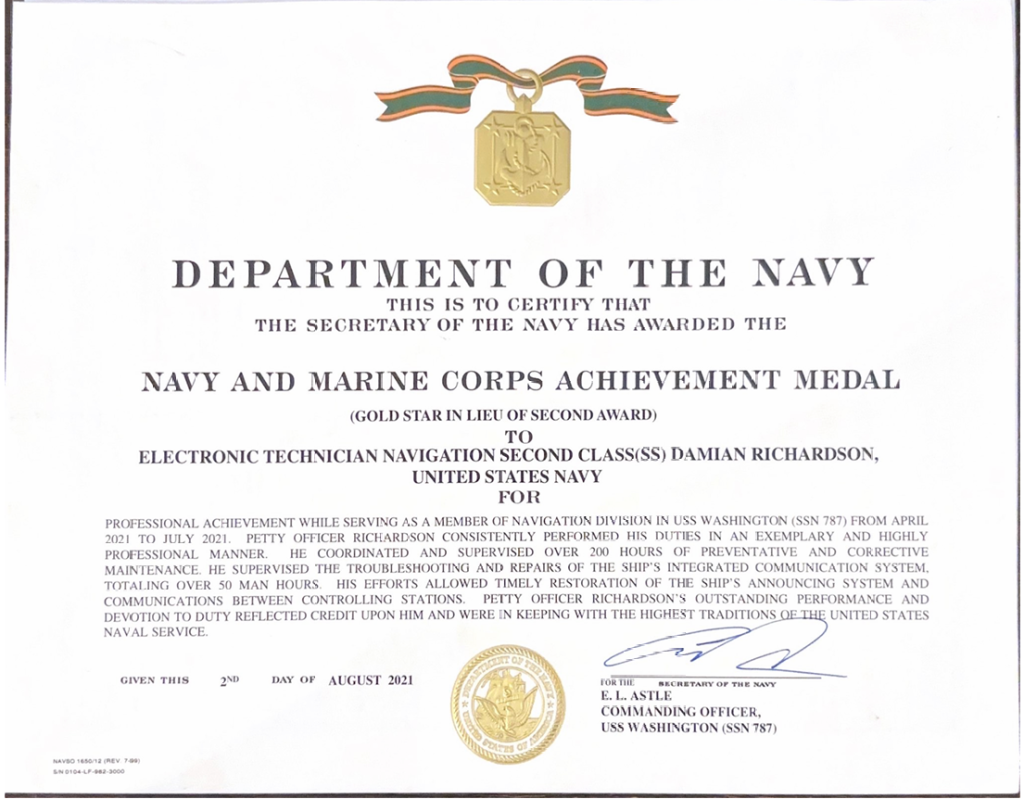
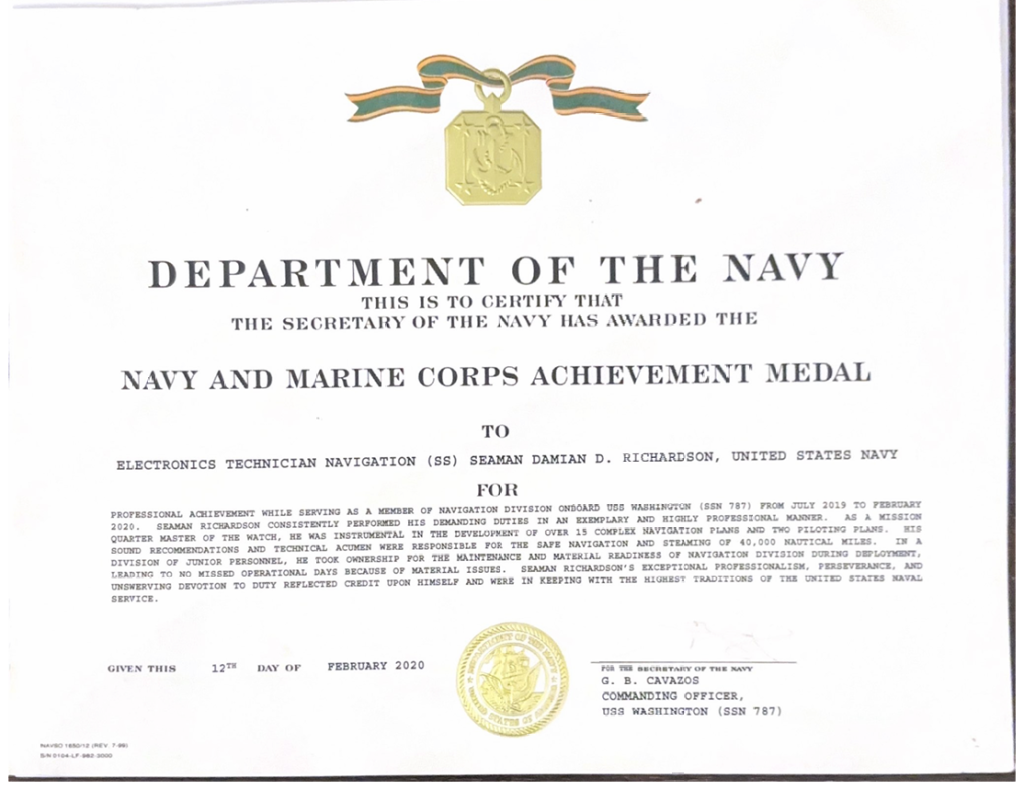
The next artifact is my EP Navy Evaluation.
A Navy Evaluation (commonly called an EVAL) is the official performance report that documents a sailor’s achievements, leadership, character, and overall impact during a specific period of time, usually once per year. It’s one of the most important documents in a sailor’s career because it directly affects promotions, assignments, and advancement opportunities.
Within an EVAL, sailors are ranked against their peers using recommendation categories:
- EP (Early Promote)
- MP (Must Promote)
- P (Promotable)
- (And sometimes lower, but EP/MP/P are the common ones)
An EP — Early Promote — is the highest recommendation a sailor can get. It means:
- This sailor is performing at a level above their current rank.
- They are ready for immediate promotion.
- They are among the best in their peer group.
- They show strong leadership, initiative, and impact.
Because EPs are limited (usually only 20% of a command’s sailors in a paygrade can get EP), earning an EP is highly competitive. It’s not just about doing your job well — it’s about standing out, leading others, improving the command, solving problems, and making a measurable difference.
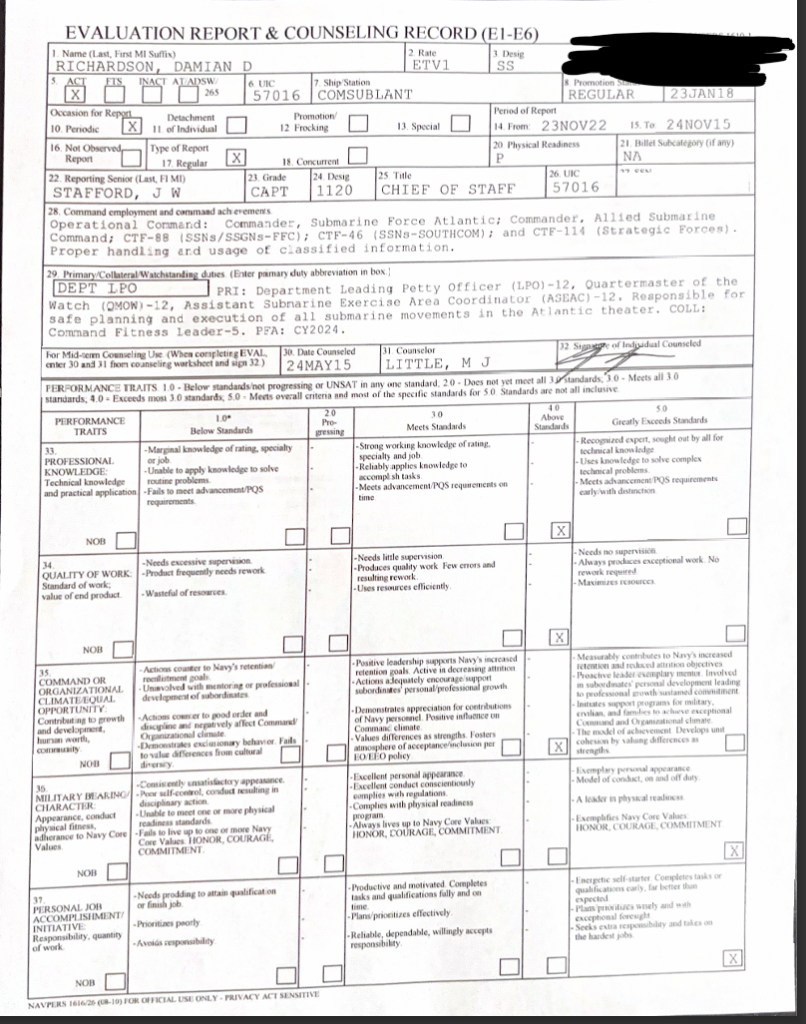
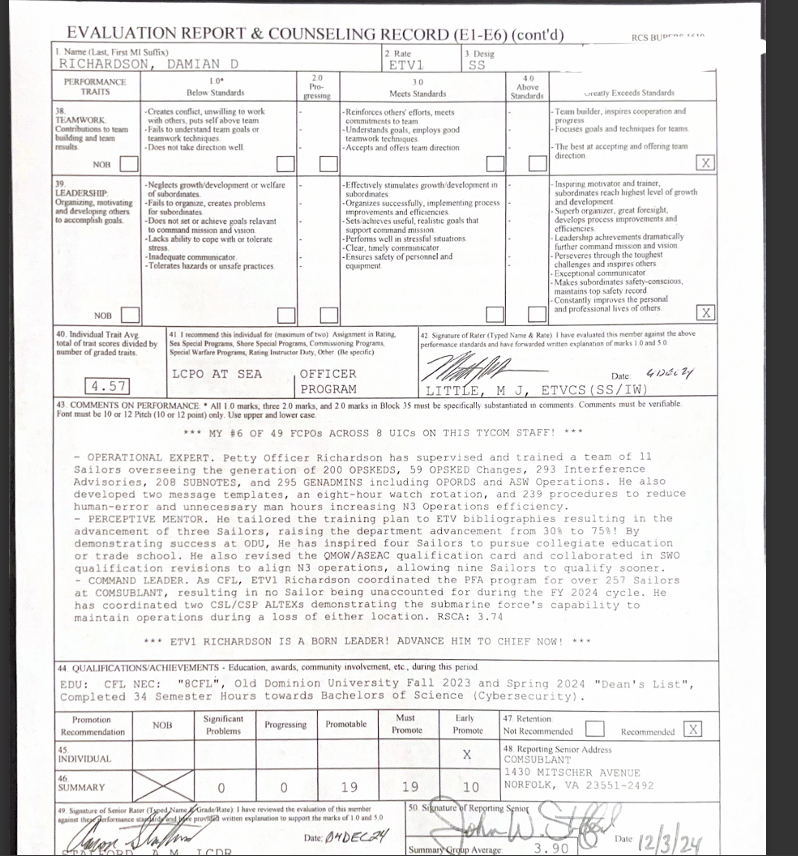
Leadership – Skill #2
Leadership has been a core part of my journey over the past 44 months in the United States Navy. Through hands-on experience leading teams and navigating real-world challenges, I’ve learned the value of communication, accountability, and building trust. Along the way, I’ve taken leadership and supervisory courses that helped sharpen my skills and gave me new perspectives on how to better support and guide others. Every opportunity to lead has taught me not just how to manage tasks, but how to bring out the best in the people around me something I take a lot of pride in.
The Navy Advanced Leadership Development Course (ALDC) is designed to build on the foundational leadership skills of mid-level enlisted sailors, typically E-6 to E-7, preparing them for greater supervisory and management responsibilities. The course focuses on enhancing critical leadership competencies such as communication, decision-making, conflict resolution, mentorship, and team development.
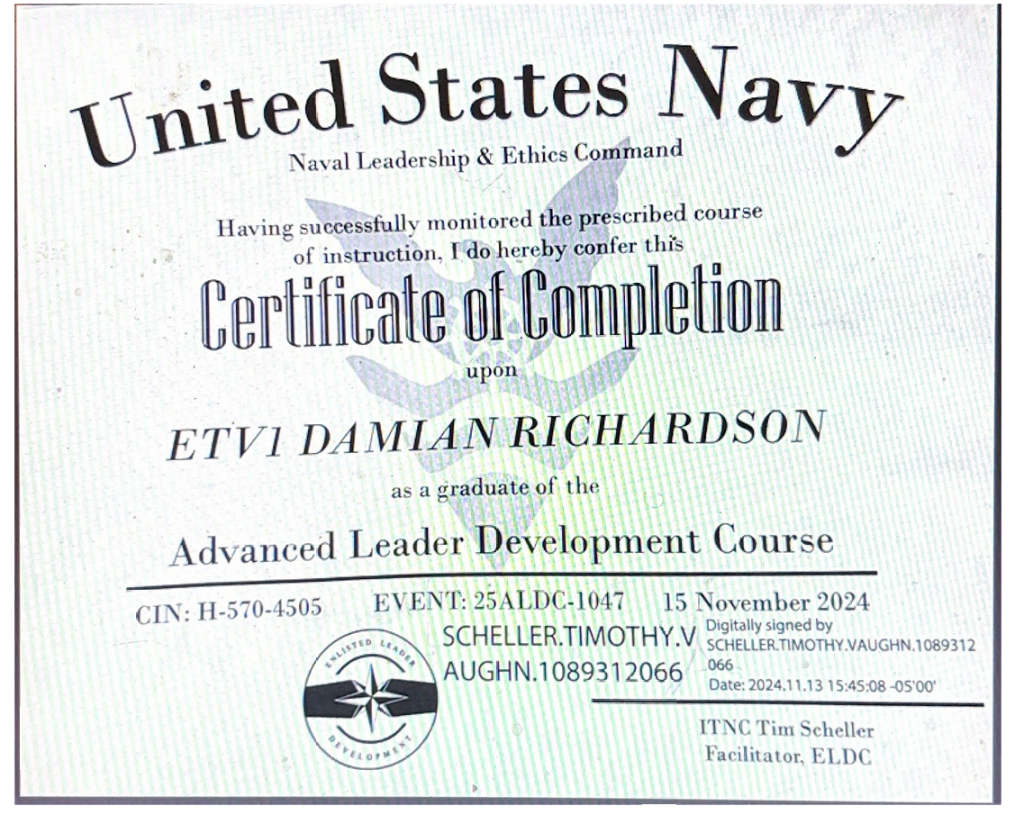
The Navy Navigation Supervisor Course (NAVSUP) is an advanced training program designed to prepare qualified sailors to serve as navigation supervisors aboard U.S. Navy vessels. This course provides in-depth instruction on advanced navigation techniques, voyage planning, rules of the road, celestial navigation, electronic navigation systems, and the management of navigation teams. Students learn to oversee all aspects of a ship’s safe navigation, including chart corrections, tactical maneuvering, and the coordination of bridge watch teams during complex operations.
The course emphasizes precision, leadership, and attention to detail, ensuring that graduates are capable of managing navigation departments, training junior personnel, and advising command leadership on safe navigation practices. Upon successful completion, sailors are entrusted with the critical responsibility of maintaining the ship’s navigational safety during all evolutions, both at sea and in restricted waters.
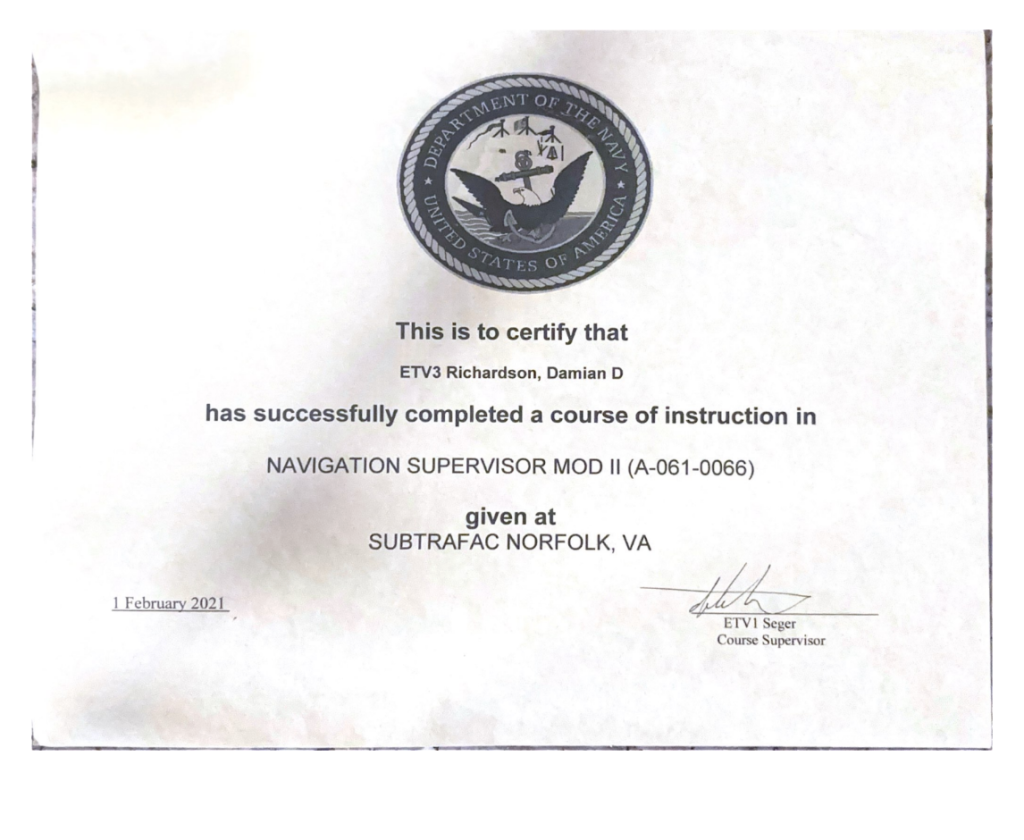
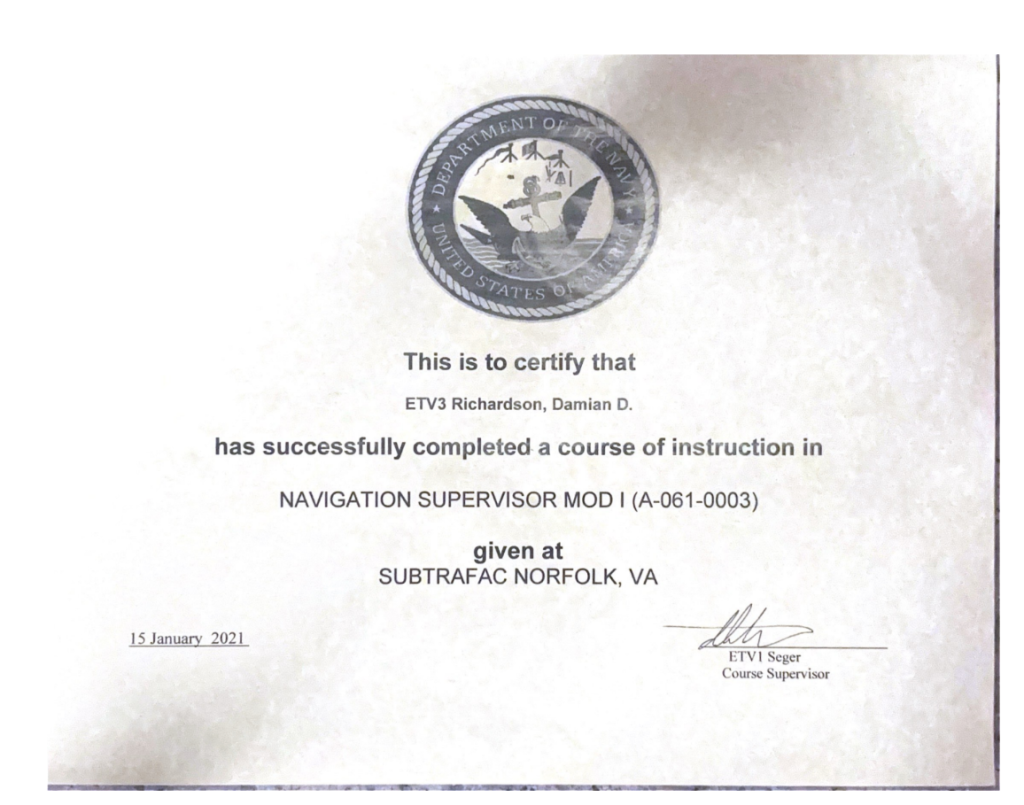
The Division Officer Qualification in the U.S. Navy is a key milestone in the professional development of officers, typically those at the O-1 to O-3 rank, as they begin to take on leadership roles within their assigned divisions. This qualification ensures that officers are proficient in managing, leading, and supervising the sailors in their division, while overseeing the operation and maintenance of the division’s equipment and systems.
Division officers are responsible for the well-being, training, and readiness of their personnel. They are expected to demonstrate strong leadership, technical knowledge, and problem-solving skills
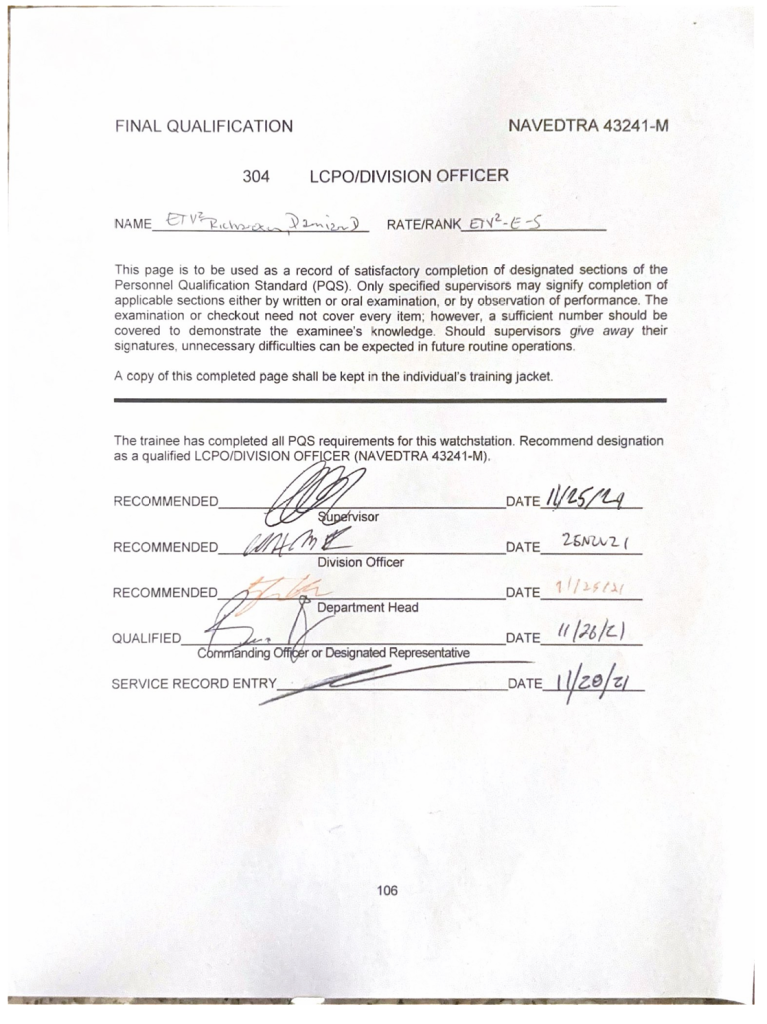
Quality Assurance – Skill 3
The Navy’s Quality Assurance (QA) Program is designed to ensure that all maintenance, repair, and operational processes are executed to the highest standards of safety, efficiency, and effectiveness. The program focuses on maintaining readiness by identifying, preventing, and correcting any defects or discrepancies in equipment, systems, and procedures. It incorporates a systematic approach to monitoring, evaluating, and improving the quality of work performed across various Navy commands and operations.
The QA program involves a range of activities, including routine inspections, audits, and assessments to verify that work is being conducted according to established specifications and regulations. Personnel involved in the program are trained in evaluating work performance, identifying areas for improvement, and implementing corrective actions when necessary.
A Maintenance Planner for Quality Assurance (QA) plays a critical role in ensuring that all scheduled maintenance is properly planned, documented, and executed to meet the Navy’s strict quality standards. Their primary responsibility is to develop detailed maintenance plans that comply with technical manuals, maintenance requirements cards (MRCs), and applicable QA procedures.
They coordinate with work centers, supply, and technical experts to ensure all materials, tools, and references are available before maintenance begins. Maintenance planners also identify when QA inspections, verifications, or checkpoints are required and ensure they are scheduled appropriately.
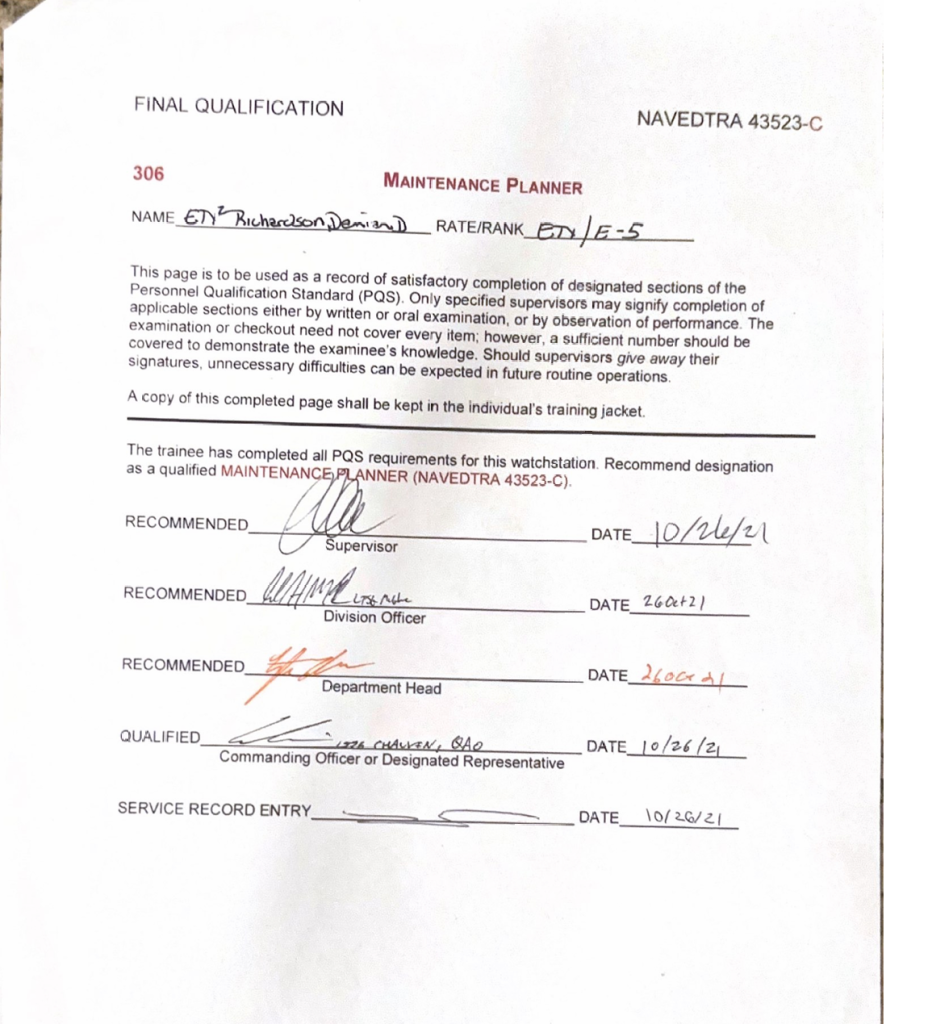
A Quality Assurance (QA) Inspector in the Navy is responsible for ensuring that all maintenance, repairs, and operations are performed in strict compliance with established technical standards, procedures, and safety regulations. Their primary duty is to inspect, verify, and document work throughout different stages of maintenance to confirm that it meets Navy specifications and quality requirements.
QA Inspectors conduct both in-process and final inspections, ensuring that critical tasks are performed correctly and safely.
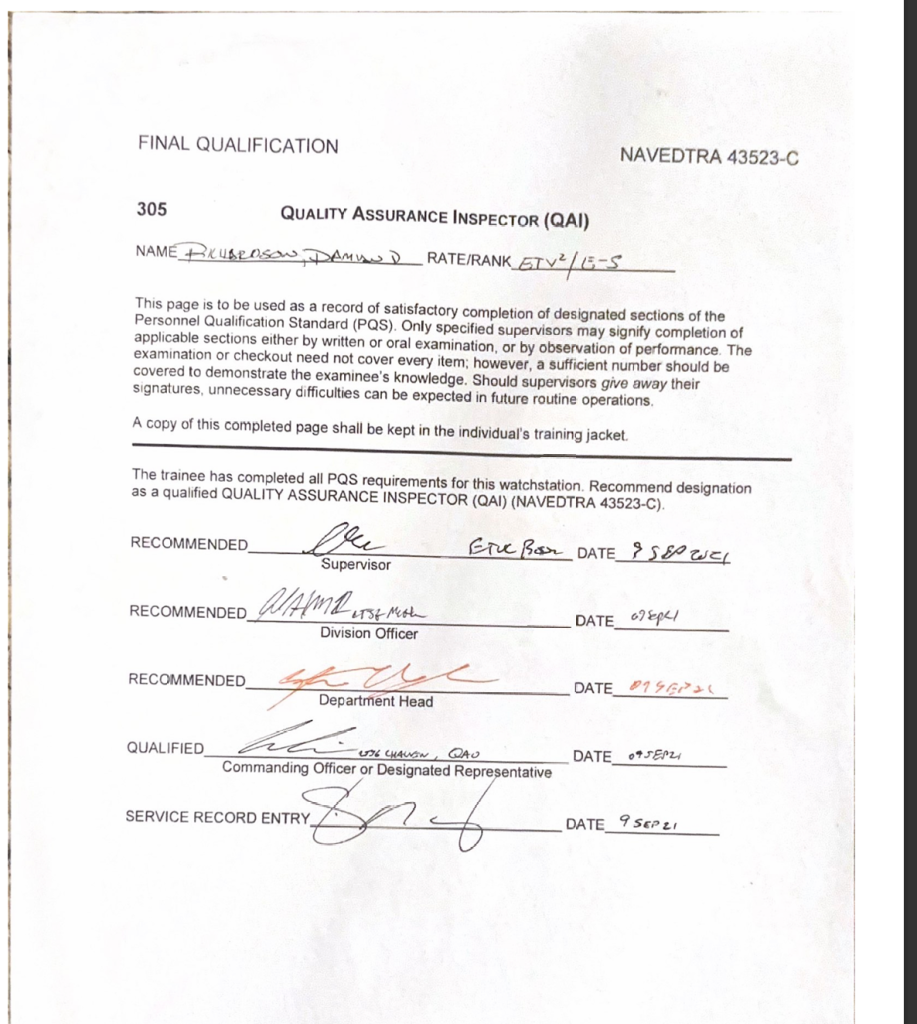
A Controlled Material Petty Officer (CMPO) is responsible for the management, tracking, and proper handling of controlled materials used in maintenance and operations, particularly materials that have critical quality, safety, or security requirements. CMPOs ensure that all controlled materials — such as specialized parts, hazardous materials, and certified equipment — are properly received, stored, issued, and accounted for according to Navy regulations and quality assurance standards.
